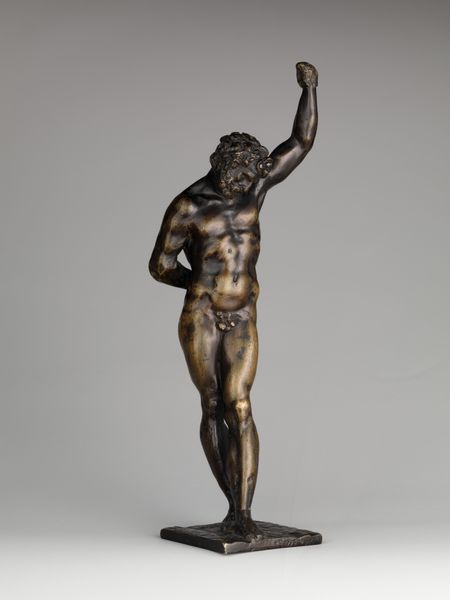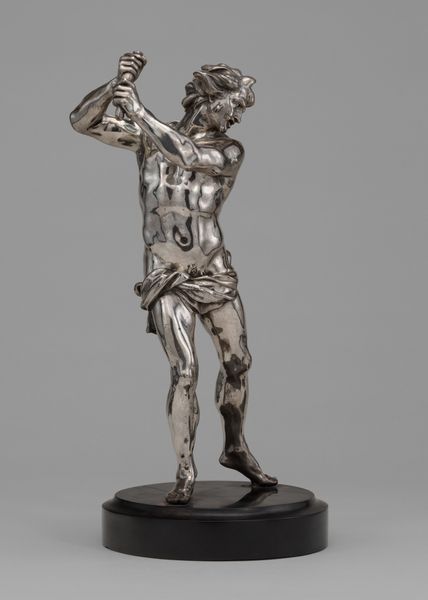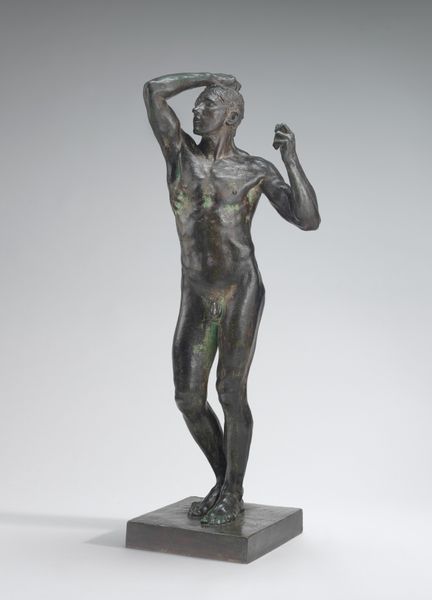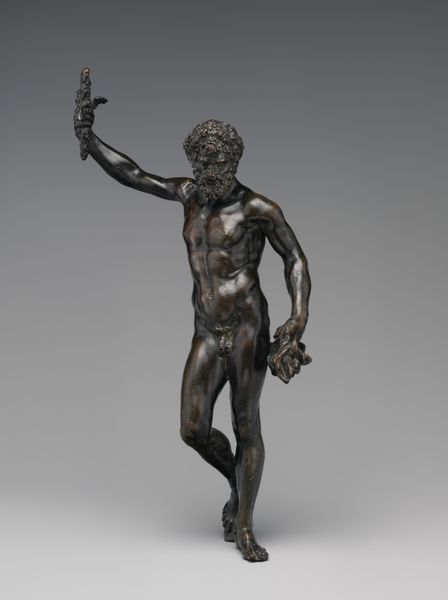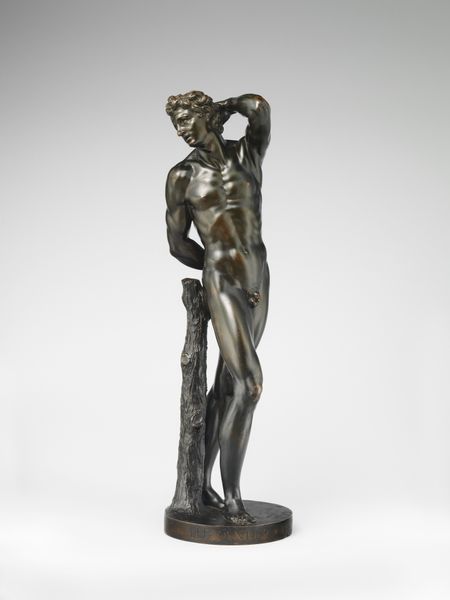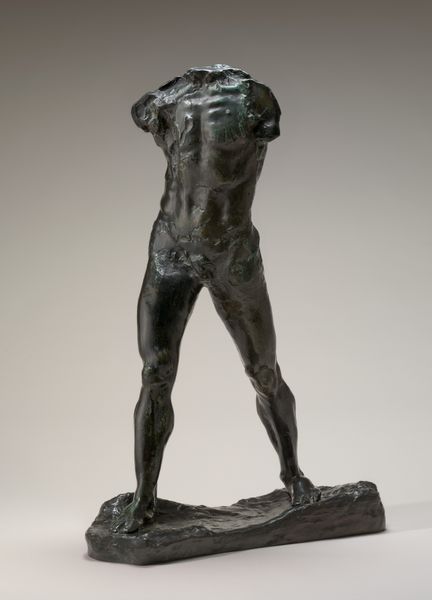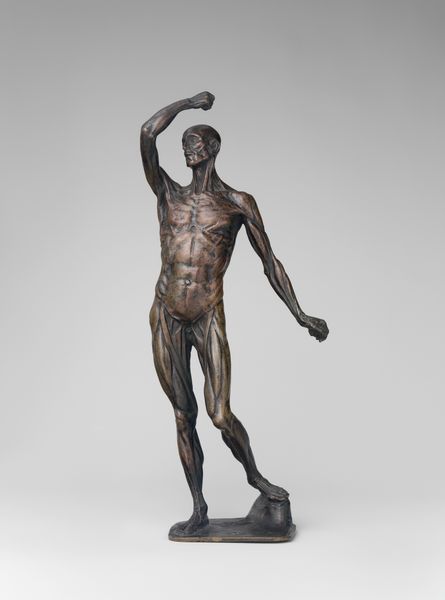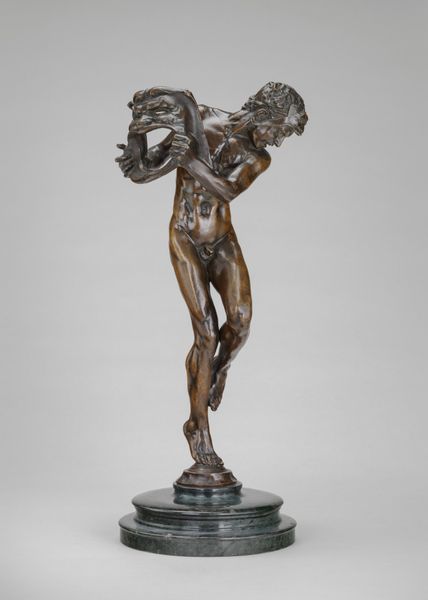
Young Sophocles Leading the Chorus of Victory after the Battle of Salamis c. 1885 - 1911
0:00
0:00
bronze, sculpture
#
portrait
#
sculpture
#
greek-and-roman-art
#
bronze
#
figuration
#
classicism
#
sculpture
#
mythology
#
history-painting
#
academic-art
Dimensions: 236.9 × 127 × 81.3 cm (93 1/4 × 50 × 32 in.)
Copyright: Public Domain
John Donoghue sculpted this bronze figure, Young Sophocles Leading the Chorus of Victory after the Battle of Salamis, in the late 19th century. The work presents a dynamic, nude Sophocles, caught in a moment of celebratory performance. Note how Donoghue uses the bronze medium to create a texture that enlivens the surface, catching light and shadow to define muscle and form. The figure's pose, with one arm raised and a slight contrapposto, suggests movement and vitality. This stance creates a diagonal line that cuts through the sculpture, adding to the overall sense of energy. Donoghue's choice to depict Sophocles nude, harkens back to classical ideals of beauty and heroism. Yet, the inclusion of contemporary footwear destabilizes this timeless image, blending classical and modern elements. Consider how this formal tension invites reflection on cultural memory, and how heroism and artistic expression are continually reinterpreted through changing times. The bronze acts not just as a material but as a signifier, embodying layers of historical and artistic meaning that prompt us to consider how we engage with the past in the present.
Comments
No comments
Be the first to comment and join the conversation on the ultimate creative platform.
